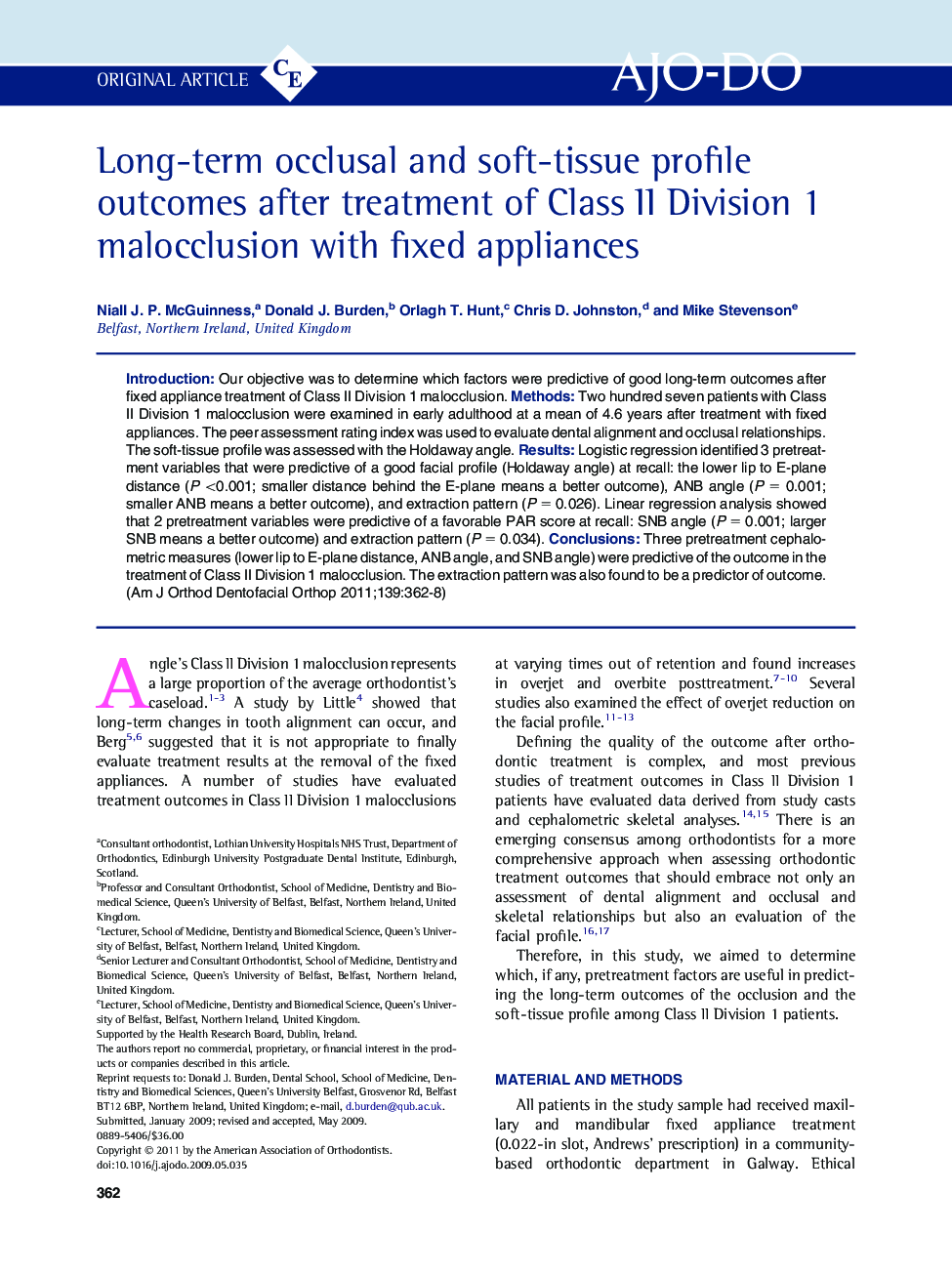| Article ID | Journal | Published Year | Pages | File Type |
|---|---|---|---|---|
| 3117128 | American Journal of Orthodontics and Dentofacial Orthopedics | 2011 | 7 Pages |
IntroductionOur objective was to determine which factors were predictive of good long-term outcomes after fixed appliance treatment of Class II Division 1 malocclusion.MethodsTwo hundred seven patients with Class II Division 1 malocclusion were examined in early adulthood at a mean of 4.6 years after treatment with fixed appliances. The peer assessment rating index was used to evaluate dental alignment and occlusal relationships. The soft-tissue profile was assessed with the Holdaway angle.ResultsLogistic regression identified 3 pretreatment variables that were predictive of a good facial profile (Holdaway angle) at recall: the lower lip to E-plane distance (P <0.001; smaller distance behind the E-plane means a better outcome), ANB angle (P = 0.001; smaller ANB means a better outcome), and extraction pattern (P = 0.026). Linear regression analysis showed that 2 pretreatment variables were predictive of a favorable PAR score at recall: SNB angle (P = 0.001; larger SNB means a better outcome) and extraction pattern (P = 0.034).ConclusionsThree pretreatment cephalometric measures (lower lip to E-plane distance, ANB angle, and SNB angle) were predictive of the outcome in the treatment of Class II Division 1 malocclusion. The extraction pattern was also found to be a predictor of outcome.
